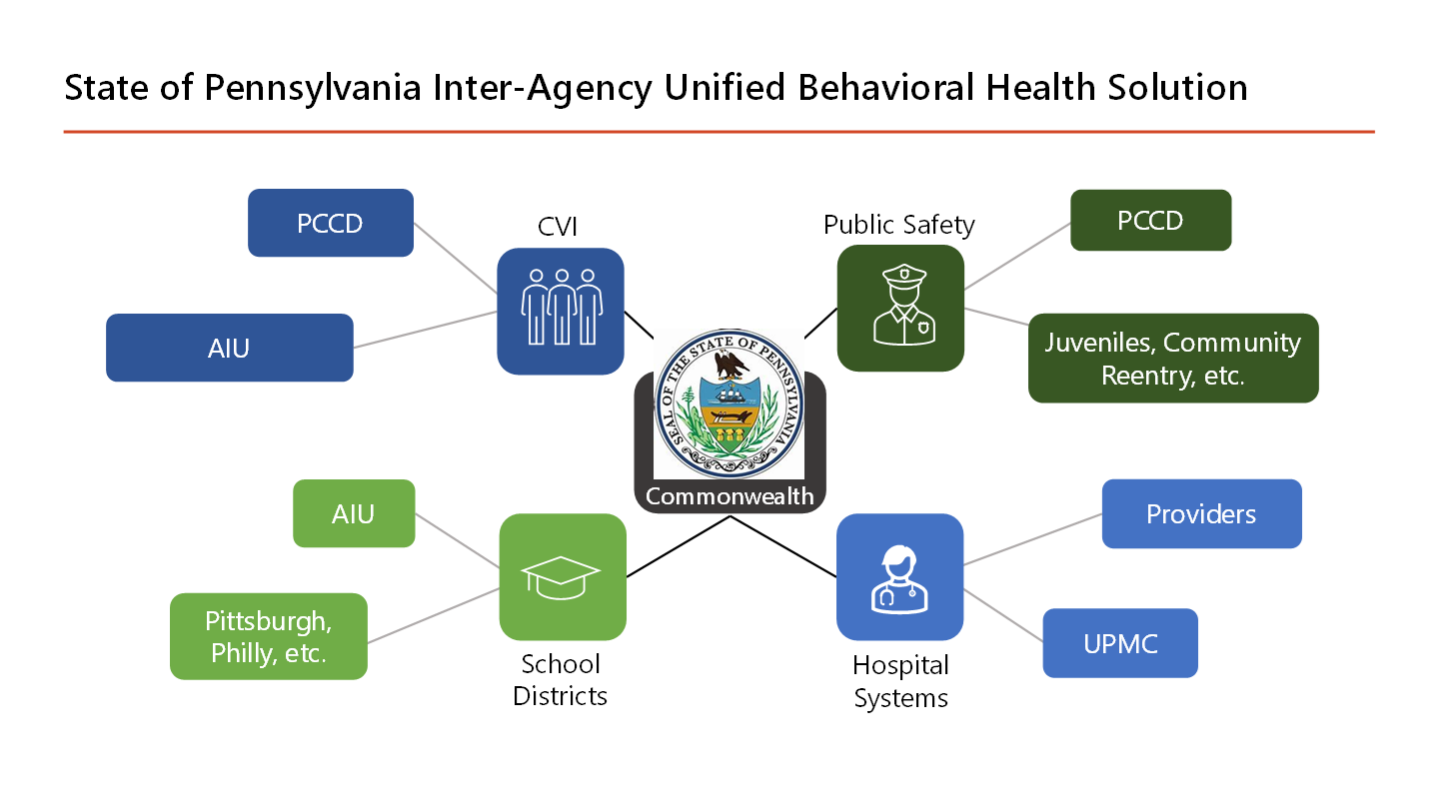ALIGNMENT WITH GOV. SHAPIRO’S EXECUTIVE ORDER 2023-20 – PENNSYLVANIA BEHAVIORAL HEALTH COUNCIL
The MHCCSVI program represents a ready for implementation solution response to Governor Shapiro’s Executive Order Streamlining Mental Health & Substance Use Disorder Efforts to Improve Accessibility Across the Commonwealth. The program delivers on the Governor’s mandate to implement a statewide action plan to address any gaps in access, affordability, or delivery of services, with the goal of removing silos across state agencies, healthcare providers, payers, state and local government sectors, and decreasing the wait time for services for Pennsylvanians in need.
• [Goal 1]: Streamline Commonwealth Behavioral Health Service - By providing an inter-agency, evidence-based behavioral & mental health support, the program can empower therapists to equip individuals with the tools they need to deal with mental health challenges and substance use disorders.
• [Goal 2]: Decrease wait times for behavioral & mental health services – The program offers 24/7 accessibility to evidence-based mental health support, primary care physician ordered mental health assessments, behavioral health interventions for incarcerated citizens, etc.
• [Goal 3]: Improve access to behavioral & mental health services for underserved populations - The program's multilingual capabilities address a critical gap in providing accessible behavioral & mental health resources to diverse populations.
• [Goal 4]: Enhance data-driven decision making within the justice system – The program can generate valuable data on program usage and outcomes, informing future program development and policy decisions
This initial MHCCSVI program implementation with AIU will be the first of 29 Intermediate Units across the Commonwealth to collaborate with the mySHO+Scalable Care platform to streamline and improve the accessibility of mental health and substance use disorder (SUD) services, and to increase timely access to mental health care for youth across the Commonwealth, especially in the state’s most underserved and rural areas.

